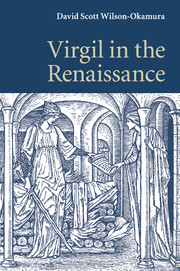Book contents
- Frontmatter
- Dedication
- Contents
- Illustrations
- Acknowledgements
- Texts and abbreviations
- Introduction
- Part I Publication
- Part II Reputation
- Part III Interpretation
- Chapter 5 Virgil’s Odyssey
- Chapter 6 Virgil’s Iliad
- Epilogue
- Appendix A Virgil commentaries in Latin editions, 1469–1599
- Appendix B Virgil commentaries ranked by number of printings
- Index
- References
Chapter 5 - Virgil’s Odyssey
from Part III - Interpretation
Published online by Cambridge University Press: 05 March 2014
- Frontmatter
- Dedication
- Contents
- Illustrations
- Acknowledgements
- Texts and abbreviations
- Introduction
- Part I Publication
- Part II Reputation
- Part III Interpretation
- Chapter 5 Virgil’s Odyssey
- Chapter 6 Virgil’s Iliad
- Epilogue
- Appendix A Virgil commentaries in Latin editions, 1469–1599
- Appendix B Virgil commentaries ranked by number of printings
- Index
- References
Summary
Indeed, the safest road to Hell is the gradual one – the gentle slope, soft underfoot, without sudden turnings, without milestones, without signposts.
ScrewtapePrioritizing episodes
The previous chapters were about reputation as much as interpretation: what did the Eclogues and Georgics mean, but also who was their author? What were his virtues? his vices? his methods of working? their results, compared with those of other writers? This chapter and its sequel are, if possible, even more ambitious. The goal of them is to give a survey of the whole Aeneid, as it was understood by European readers from about 1300 to 1600.
To accomplish this goal many even of the poem’s most luminous episodes will have to be passed over in silence. For these sins of omission no contrition is forthcoming. Mapping every crest and crevice of interpretation would not only be impossible, it would defeat the purpose of a survey, which is to sketch the big picture; to limn large-scale features of the interpretive landscape; to draw connections between seemingly discrete authors; and to locate specialized research in its historical, pan-European context. Whereas an inventory should be exhaustive, a survey must needs be selective. Our task here is not to catalogue details, but to place them in perspective.
- Type
- Chapter
- Information
- Virgil in the Renaissance , pp. 145 - 190Publisher: Cambridge University PressPrint publication year: 2010



